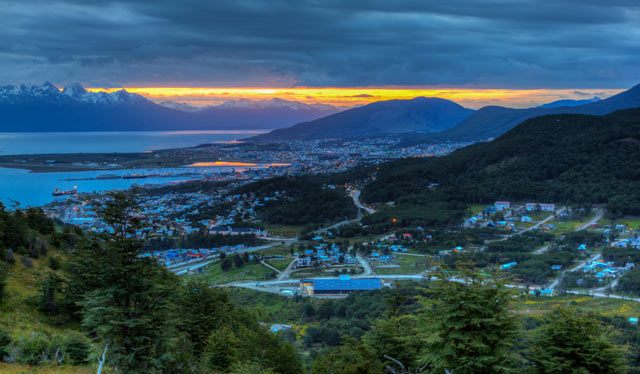‘God’s sentinel’
Bishop Waite Stirling followed Jesus to the southernmost city in the world to establish a mission among indigenous peoples
2019 is a significant year for South American Christians, writes Nick Drayson, CMS mission partner and the Bishop of Northern Argentina.
The new year marks the 150th anniversary of two key events: the founding of the first successful Anglican mission on what would become Argentine soil, and the consecration of the first bishop. Both of these landmarks are associated with one remarkable man: Waite Hockin Stirling.
“As I pace up and down at evening before my hut, I fancy myself a sentinel – God’s sentinel, I trust – stationed at the southernmost outpost of His great army. A dim torch of heaven surprises the heart with joy, and I forget my loneliness in realising the privilege of being permitted to stand here in Christ’s name.”
Stirling’s diary, January 1869

These stark words, written in Ushuaia, evoke the striking image of a man patrolling the shore of a sheltered bay at the bottom of South America, and contemplating the move he has made for the sake of the gospel – to establish a base for mission among the same tribes who had caused the death of several of his colleagues only a few months and years earlier.
“This day week the (schooner) ‘Allen Gardiner’ left Ushuaia, and I have, with God’s mercy, passed in safety and comfort a Sunday in these secluded parts. My nearest countrymen are probably careering in gallant ships over the billows of Cape Horn.”
He had indeed had the relief of presiding over a church service with the Yahgans, which, in a short time would become the basis of a flourishing work of mission and education in the tribes of the area. At the time it must have seemed a lonely and distant goal.
It was now 22 years since, as an undergraduate at Oxford, he had heard Captain Allen Gardiner – who would die on these shores in 1851 – issue a missionary challenge and this had remained with him. It had led him to offer his services as general secretary of the Patagonian Mission – soon to become SAMS (the South American Missionary Society). And it had led him to follow his predecessor in the role, the Rev George Pakenham Despard, to the “uttermost parts of the earth” where he now stood.
Based on the Falklands from 1863, he at first worked tirelessly with friendly Yahgans, including the relatives of those who had so recently massacred the crew of the ship that had taken another missionary to Tierra del Fuego. Alongside him was Thomas Bridges, Despard’s adopted son, who was fast becoming fluent in Yahgan.
But he soon became convinced that the only way to establish enough trust to extend the gospel among these people was to live among them. And so he set up his house in the sheltered bay of Ushuaia, Tierra del Fuego, and entrusted himself to God, and to those Yahgan friends who were prepared to go with him.
His character and confidence won through, and the way was opened for others to follow, the first being Thomas Bridges and John Lawrence. Stirling stayed for seven months before being recalled to London, where, in December 1869, he was consecrated the first bishop of the Falklands, with responsibility for the whole of the South American continent south of the Guyanas!
Bridges’ son-in-law Wilfrid Barbrooke Grubb was soon to become the pioneer missionary to the Chaco regions of Paraguay and Argentina, and Allen Gardiner’s son and grandson helped open up the mission field in the South of Chile. The English chaplaincies out of which the existing dioceses in several major cities in the continent have grown also benefited from Stirling’s ministry.
For the next 30 years he established openings for the gospel and pastoral care for both Amerindians and English settlers. Today, 150 years on from that first service in Ushuaia, the Anglican church is established throughout South America, with national bishops of both indigenous and European descent working alongside the remaining few foreign missionaries in proclaiming the unchanging gospel to a very different continent to the one Stirling knew.
What we in the South American Anglican church owe to Stirling
- Spiritual vision: The same vision that led Stirling to commit his life to God’s service in South America inspires the church here today – the gospel that is able to transform lives and whole communities in the face of huge odds.
- Incarnational mission: Stirling’s mission was lived out and shown in the flesh. He suffered the early death of his first wife, and buried her in Argentina. He felt countless moments of untold loneliness as he watched for God on the southern shore. And his sacrificial mission was expressed not only with words, but also in practical service.
- Supporting structures: His appointment as bishop enabled him to establish, over many years, the structures that would allow his successors to build up what is today a fully-fledged Anglican church, embracing both indigenous and English peoples, as well as the current leadership by Latin American national bishops.